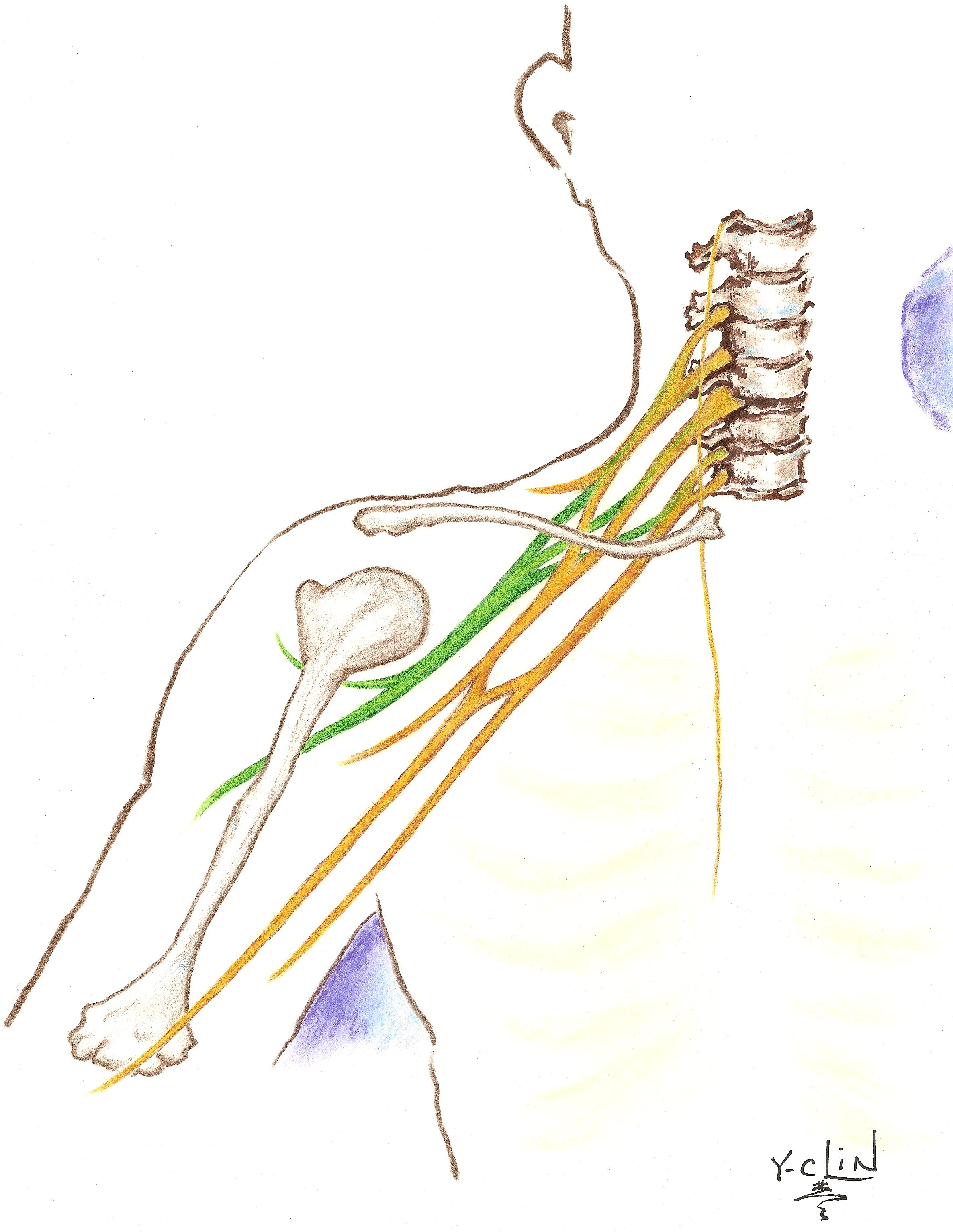Initial evaluation is necessary to take place as early as possible (no sooner than one month after injury but no later than 3-6 months) in order to be able to provide appropriate care and interventions. An adult brachial plexus palsy is usually the result of trauma to the neck and shoulder areas. The mechanism may be a lateral traction injury to the brachial plexus nerves in the neck causing damage to the nerves and a loss of function. Outcomes depend on severity of the brachial plexus injury and the timing of intervention.
What Happens in a Brachial Plexus Palsy?

The brachial plexus is a complex network of nerves extending from the neck into each arm. This nerve network controls movement and sensation in the shoulder, arm, wrist, hand and fingers. A Brachial Plexus Palsy (BPP) affects the nerves passing from the neck to the arm. These are the nerves that trigger movement from the shoulder down to the fingers. The most common cause of brachial plexus injury is stretching, compressing, or tearing of the nerves that may result in scar formation. Although some brachial plexus injuries may heal on their own, others may result in lifelong disability if not treated promptly. Depending on the type of brachial plexus injuries, symptoms can occur in the shoulder, elbow, and/or hand and fingers. These symptoms include loss of feeling, loss of motor control, limited or no active range of motion and pain.
First Visit
Our adult clinic includes specialists from a variety of disciplines, who each play a vital role in helping you. This multidisciplinary approach allows us to assess your needs and recommend a collaborative treatment plan during each visit. Patients participating in our clinic can expect an occupational therapy assessment followed by specialists' evaluation from neurosurgery, reconstructive surgery, physical medicine, and pain specialist depending on your individual needs. When necessary, an EMG (Electromyography), a test that can detect abnormal muscle electrical activity, can be performed on-site to expedite the evaluation process. After the evaluation is completed, the team will present formal recommendations to you.
What Happens Next?
In order to provide holistic all inclusive care/recommendations, we may need further studies to be completed such as; MRI, ultrasound, CT scan, x-rays etc. Therapy recommendations will be provided for your local therapist to follow. Frequent follow-ups may be required and patient/family commitment regarding the recommendations are crucial for maximum functional outcomes.
